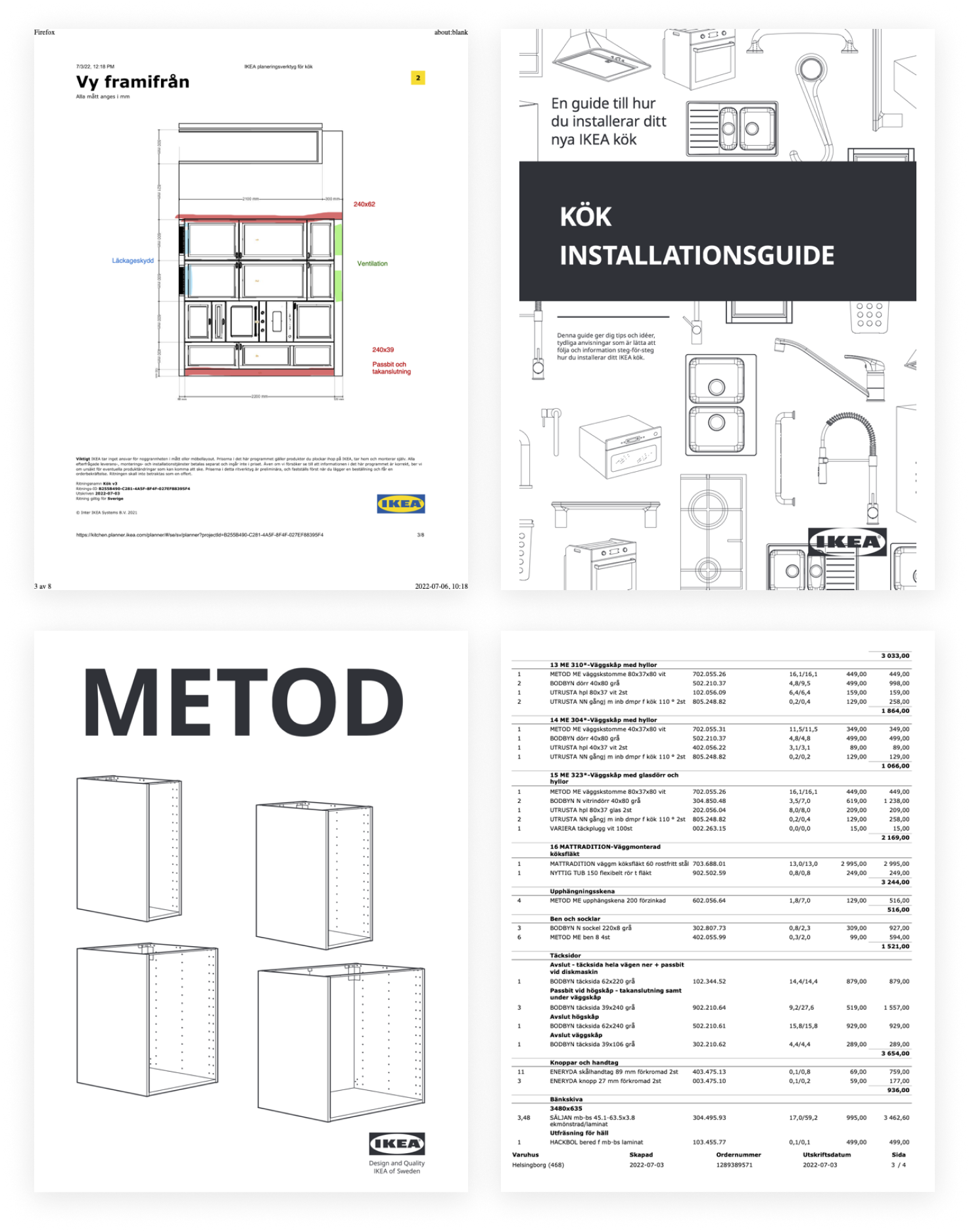UX/UI DESIGN
As an extension of my graphic design interest i like solving complex problems and creating intuitive interfaces.
Home

Assemble assistant
This is a concept design that I have developed during my time at IKEA. It takes a shot at solving the communication issue that arises in large bespoke solutions such as kitchens. It would be a bridge between several stakeholders. Add value in the form of enhanced user experience as well as on the bottom line for the company.
From cabinets and doors to the water trap under the sink, an IKEA kitchen contains somewhere between 100 to 150 articles. This makes it by far the most complex solution we offer our customers. The customizability of our kitchens are one of our main strengths, as it lets us create dream kitchens for numerous people. However, with this many variables there are almost endless solutions, but only one standardized instruction manual. Could we re-think this process?
The main concept of this solution is to use the articles in the customer’s design as an input for assembly guidance. By doing this we are creating an enhanced communication chanel which gives the customer the right information at the right time.
From cabinets and doors to the water trap under the sink, an IKEA kitchen contains somewhere between 100 to 150 articles. This makes it by far the most complex solution we offer our customers. The customizability of our kitchens are one of our main strengths, as it lets us create dream kitchens for numerous people. However, with this many variables there are almost endless solutions, but only one standardized instruction manual. Could we re-think this process?
The main concept of this solution is to use the articles in the customer’s design as an input for assembly guidance. By doing this we are creating an enhanced communication chanel which gives the customer the right information at the right time.

The essence of the app is to assist the customer in their assembly process by providing personalized information at the right time. This will be done by using the articles in the kitchen order as “if-variables” for adequate information to be shown.
A main concern in my process of designing this prototype has been what kind of features to include. Should one be able to reach the kitchen drawings from the NKP, or only the 3D-model? Should one include an “estimated time”- bar, as most articles have this kind of information? Or could this result in stress, or a sense of failure if one does not match the estimated time? A technical aspect - from where should the app draw the primary data? From the order, or the item list within NKP (I would suggest an extra module in the NKP where the co-worker can modify the item list)? Here we also enters the realm of what I would describe as "user-experience by proxy" meaning that the experience of the customer is closely interlinked with the experience of the co-worker. What is an adequate user experience for the co-worker to provide accurate information to the customer?
A main concern in my process of designing this prototype has been what kind of features to include. Should one be able to reach the kitchen drawings from the NKP, or only the 3D-model? Should one include an “estimated time”- bar, as most articles have this kind of information? Or could this result in stress, or a sense of failure if one does not match the estimated time? A technical aspect - from where should the app draw the primary data? From the order, or the item list within NKP (I would suggest an extra module in the NKP where the co-worker can modify the item list)? Here we also enters the realm of what I would describe as "user-experience by proxy" meaning that the experience of the customer is closely interlinked with the experience of the co-worker. What is an adequate user experience for the co-worker to provide accurate information to the customer?

Kompass
Most are familiar with the self service of IKEA. For example, the table you want to buy is marked by a note that provide the information that you can pick it up at hallway 23, shelf 6. However, all items does not have this information. Some might say “home decor department”, but where is that? And the department is huge and the pillow case I am interested in is tiny.
The core of this project is to combine two sets of information. Through the mobile devices’ GPS it is possible to locate the customers’ position in the store, secondly all items at IKEA have a specific location but they are not communicated to the customer. These two inputs are the foundation for this idea of a “mapified store” where customers can find their desired products with ease.
The core of this project is to combine two sets of information. Through the mobile devices’ GPS it is possible to locate the customers’ position in the store, secondly all items at IKEA have a specific location but they are not communicated to the customer. These two inputs are the foundation for this idea of a “mapified store” where customers can find their desired products with ease.